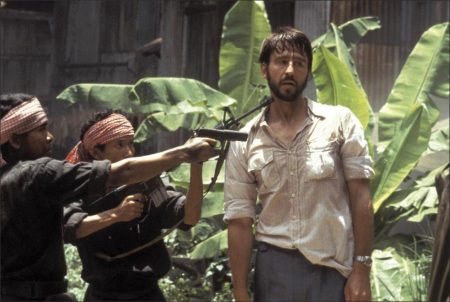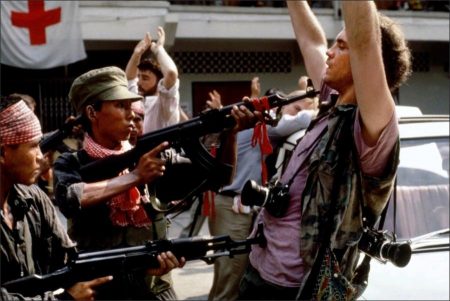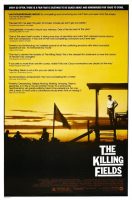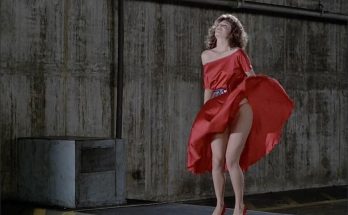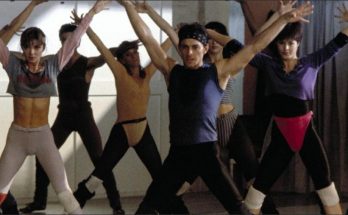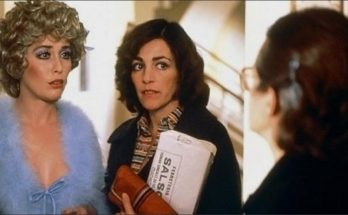The Killing Fields movie storyline. Sydney Schanberg is a New York Times journalist covering the civil war in Cambodia. Together with local representative Dith Pran, they cover some of the tragedy and madness of the war. When the American forces leave, Dith Pran sends his family with them, but stays behind himself to help Schanberg cover the event. As an American, Schanberg won’t have any trouble leaving the country, but the situation is different for Pran; he’s a local, and the Khmer Rouge are moving in.
The Killing Fields is a 1984 British drama film about the Khmer Rouge regime in Cambodia, which is based on the experiences of two journalists: Cambodian Dith Pran and American Sydney Schanberg. The film won eight BAFTA Awards and three Academy Awards; it was directed by Roland Joffé, and stars Sam Waterston as Schanberg, Haing S. Ngor as Pran, Julian Sands as Jon Swain, and John Malkovich as Al Rockoff. The adaptation for the screen was written by Bruce Robinson; the musical score was written by Mike Oldfield and orchestrated by David Bedford.
About the Story
In the Cambodian capital, Phnom Penh, during May 1973, the Cambodian national army is fighting a civil war with the Khmer Rouge, a result of the Vietnam War overspilling that country’s borders. Dith Pran, a Cambodian journalist and interpreter for The New York Times, awaits the arrival of reporter Sydney Schanberg at the city’s airport but leaves suddenly. Schanberg takes a cab to his hotel where he meets up with Al Rockoff (John Malkovich). Pran meets Schanberg later and tells him that an incident has occurred in a town, Neak Leung; allegedly, an American B-52 has bombed the town.
Schanberg and Pran go to Neak Leung where they find that the town has been bombed. Schanberg and Pran are arrested when they try to photograph the execution of two Khmer Rouge operatives. They are eventually released and Schanberg is furious when the international press corps arrives with the U.S. Army.
Two years later, in 1975, the Phnom Penh embassies are being evacuated in anticipation of the arrival of the Khmer Rouge. Schanberg secures evacuation for Pran, his wife and their four children. However, Pran insists that he would stay behind to help Schanberg.
The Khmer Rouge move into the capital, ostensibly in peace. During a parade through the city, Schanberg meets Rockoff. They are later met by a detachment of the Khmer Rouge, who immediately arrest them. The group is taken through the city to a back alley where prisoners are being held and executed. Pran, unharmed because he is a Cambodian civilian, negotiates to spare the lives of his friends. They do not leave Phnom Penh, but instead retreat to the French embassy.
Informed that the Khmer Rouge have ordered all Cambodian citizens in the embassy to be handed over and fearing the embassy will be overrun, the embassies comply. Knowing that Pran will be imprisoned or killed, Rockoff and fellow photographer Jon Swain (Julian Sands) of The Sunday Times try to forge a British passport for Pran; the deception fails when the image of Pran on the passport photo fades to nothing, as they lack adequate photographic developer. Pran is turned over to the Khmer Rouge and is forced to live under their totalitarian regime.
Several months after returning to New York City, Schanberg is in the midst of a personal campaign to locate Pran. In Cambodia, Pran has become a forced labourer under the Khmer Rouge’s “Year Zero” policy, a return to the agrarian ways of the past. Pran is also forced to attend propagandist classes where many undergo re-education. As intellectuals are made to disappear, Pran feigns simple-mindedness. Eventually, he tries to escape, but is recaptured. Before he is found by members of the Khmer Rouge, he slips into a muddy cesspool filled with rotting human corpses; in doing so, he stumbles upon the infamous killing fields of the Pol Pot regime, where as many as 2 million Cambodian citizens were murdered.
In 1976 Sydney Schanberg is awarded a Pulitzer prize for his coverage of the Cambodian conflict. At the acceptance dinner he tells the audience that half the recognition for the award belongs to Pran. Later in the restroom, he is confronted by Rockoff, who harshly accuses him of not doing enough to locate Pran and for using his friend to win the award. Schanberg defends his efforts, saying that he has contacted every humanitarian relief agency possible in the time since Pran’s disappearance. Rockoff suggests that Schanberg subtly pressured Pran to remain in Cambodia because Pran was so vital to Schanberg’s work. This accusation hits close to home, and Schanberg begins to wonder whether he put his own self-interest ahead of Pran’s safety. He finally confesses that Pran “stayed because I wanted him to stay”.
The Killing Fields (1984)
Directed by: Roland Joffé
Starring: Sam Waterston, Haing S. Ngor, John Malkovich, Julian Sands, Craig T. Nelson, Katherine Krapum Chey, Oliver Pierpaoli
Screenplay by: Bruce Robinson
Production Design by: Roy Walker
Cinematography by: Chris Menges
Film Editing by: Jim Clark
Costume Design by: Judy Moorcroft
Art Direction by: Roger Murray-Leach, Steve Spence
Music by: Mike Oldfield
Distributed by: Warner Bros. Pictures
Release Date: November 2, 1984
Visits: 113
